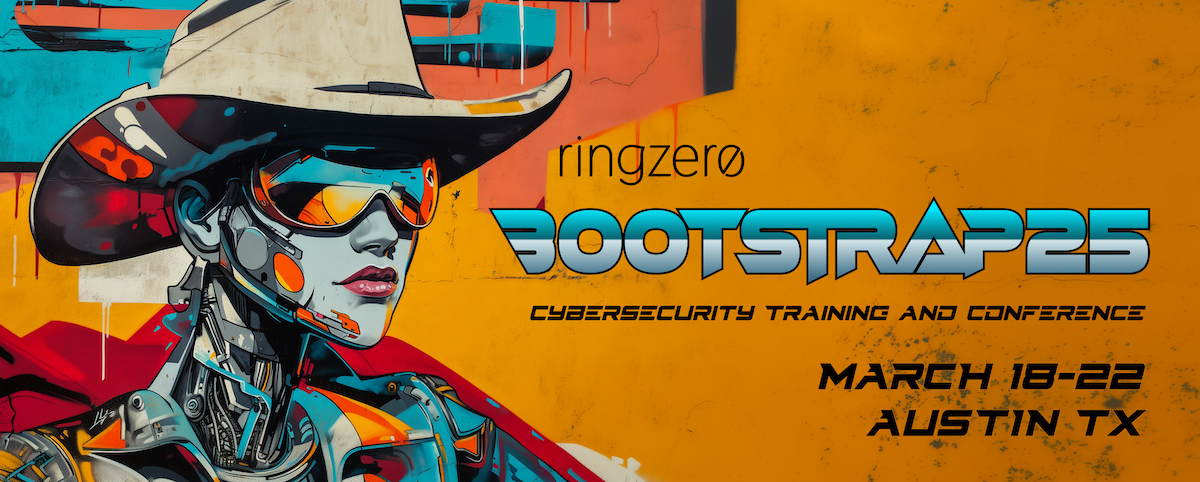
Practical Car Hacking - A Hands-On Approach // Willem Melching
In-Person | March 18-21 | 4 Days
BOOK NOWABSTRACT
Interested in opening up a car hacker's toolbox and applying these tools and techniques hands-on? Then this training is the best fit for you!
In this course, the participant will become familiar with the theory and practice around numerous techniques in automotive security. This allows the participant to see what’s in a car hacker’s toolbox, and how to mitigate possible security vulnerabilities.
The trainee will learn how to leverage open source tools to perform an analysis of various aspects of the modern car. Everything from attacks on the physical layer and diagnostic protocols to the reverse engineering of firmware will be covered.
Various simulated networks and real Electronic Control Units (ECUs) will be available to practice on. Based on experience level, different ECUs and challenges will be available.
Due to the wide variety of hands-on exercises, the training is suitable for both beginners and people more experienced with automotive (security). It's the ideal method for security researches to become familiar with the automotive domain, and be able to start a real project in the span of a few days.

Practical Car Hacking - A Hands-On Approach // Willem Melching
In-Person | March 18-21 | 4 Days
INTENDED AUDIENCE
- Security researchers interested in automotive
- Engineers interested in developing aftermarket automotive products
- Automotive engineers/suppliers
- Hackers interested in learning more about their own car
TESTIMONIALS
KEY LEARNING OBJECTIVES
- Attacks on the communication networks found in cars, such as spoofing, DOS and MITM and their mitigations.
- Overview of diagnostic protocols such as UDS and CCP/XCP and their security features.
- Various methods to obtain firmware files, and how these files can be protected.
- Reverse engineering of automotive firmware. Learn how to quickly identify the relevant part of an ECUs firmware.
- Overview of wireless attack surfaces such as TPMS and Key Fobs.
COURSE DETAILS
Day 1 - Vehicle Networks and Tools
Day 1 of the training will be used to become familiar with the standards used for the communication between Electronic Control Units (ECUs) in a vehicle. Attacks on the physical and link layer will be discussed, and their possible detection and mitigation.
In the second part of the day, we will look at hardware used to interact with the vehicle’s network, and implement our first attack.
Theory:
- Introduction to a typical modern car network layout and gateways found within.
- Physical and link layer standards such as CAN, CAN-FD, LIN, FlexRay and Automotive Ethernet.
- Where to find schematics and how to interpret them, look at available OEM software for repair shops.
- Hardware attacks on these networks and possible mitigation strategies.
- Real world examples of CAN traffic including integrity checks such as counters and checksums
- Recent developments in cryptography for automotive networks (SecOC).
- Hardware used to interact with the vehicle’s network.
Hands-On:
- Introduction to analyzing CAN traffic using Wireshark and cabana.
- Find signals on CAN bus and create a DBC file.
- Connect to a CAN bus using your computer, and perform an attack on the physical layer.
- Reverse engineer a checksum algorithm and spoof a message
Day 2 - Diagnostic Protocols and Hardware
On the second day of the training, we will dive into the actual hardware of a car and its ECUs. You’ll learn how to find the schematics of a certain car, and identify the best points to connect to the different networks. We will look at software provided to repair shops by the manufacturer
Theory:
- Diagnostic protocols such as OBD-II, KWP2000 (ISO 14230-3), Unified Diagnostic Services (UDS, ISO 14229-1) and Can Calibration Protocol (CCP/XCP).
- Discuss different microcontroller architectures commonly used in ECUs.
- PCB reverse engineering, extract firmware from ECU using debug probe.
- Fault injection attacks against automotive microcontrollers.
Hands-On:
- Implement a scanner to identify available UDS endpoints.
- Find and communicate with CCP/XCP endpoints.
- Communicate using Diagnostics over IP (DoIP)
- Extract ECU firmware using various methods
Day 3 - Reverse Engineering
Different firmware update files and their protections will be discussed. We will also look at the inside of an ECU and ways to extract its firmware. A quick introduction to Ghidra will be given.
An ECU firmware file consists of up to millions of lines of code which would take a long time to fully reverse engineer. Tips and tricks will be taught to quickly identify parts of the firmware that are of interest. After reverse engineering the security access algorithm we can flash the firmware back to the ECU.
Theory:
- Extract firmware from manufacturer update file.
- UDS update/flashing procedures.
- Fault injection techniques
- Introduction to Ghidra.
- Identify processor architecture and load firmware into Ghidra.
- Common patterns used in automotive firmware.
- Firmware integrity checks: checksums and secure boot.
Hands-On:
- Reverse engineer an ECUs security access algorithm.
- Write your own tool to flash the firmware onto an ECU.
Day 4 - RF Hacking using Software Defined Radio
On the last day of the training we will look into all things wireless. Using a Software Defined Radio (SDR) we will interact with different parts of the vehicle. We will look into how tire pressure monitoring systems work. Recent developments in FM radio have opened up a whole new wireless attack surface.
We will also look at the different kinds of attacks on keyfobs. Finally we will learn about how the powerline communication between EV and charging station (EVSE) can be monitored with an SDR to leak personal information, and can be disrupted.
Theory:
- How do Tire Pressure Monitoring System (TPMS) sensors communicate
- Attack surfaces on modern FM radio’s (RDS, HD Radio, DAB+)
- Attacks on keyfobs
- Powerline Communication between EV and charging station
Hands-On:
- Receive and spoof a TPMS sensor
- Various attacks on keyfobs
Knowledge Prequisites
- Experience with hardware and microcontrollers
- Python programming experience
- Basic reverse engineering knowledge preferred, but not mandatory
System Requirements
Hardware
- Laptop with functional ethernet port. If your laptop does not have a built-in ethernet port, make sure to bring your own USB adapter.
- Windows/MacOS/Linux are all fine
Software
- Latest version of Ghidra Installed (including required Java JDK)
- Latest version of Universal Radio Hacker installed (including RTL-SDR drivers/udev rules)

YOUR INSTRUCTOR: Willem Melching
Willem Melching (https://twitter.com/PD0WM) is an independent security researcher. He has over 7 years of experience working on automotive security and reverse engineering. During his time at comma.ai he worked an aftermarket ADAS device and providing open source tools to help the community reverse and interact with a wide variety of cars. Check out his blog (https://icanhack.nl/blog) for recent work.
https://www.linkedin.com/in/willem-melching-54a2982b/
https://twitter.com/PD0WM
BOOTSTRAP25: 60+ days before the event 75% of fees refunded; 45-60 days before event 50% refunded, less than 45 days 0% refunded. Course changes are allowed up to 14 days before event start (some restrictions will apply). Attendee changes can be accommodated up to 14 days prior to the event.
Note: In the event of a class cancellation, Ringzer0 will endeavor to offer transfer to another training at no additional charge.

All BOOTSTRAP25 + Bootloader Mixer Talks and Workshops





